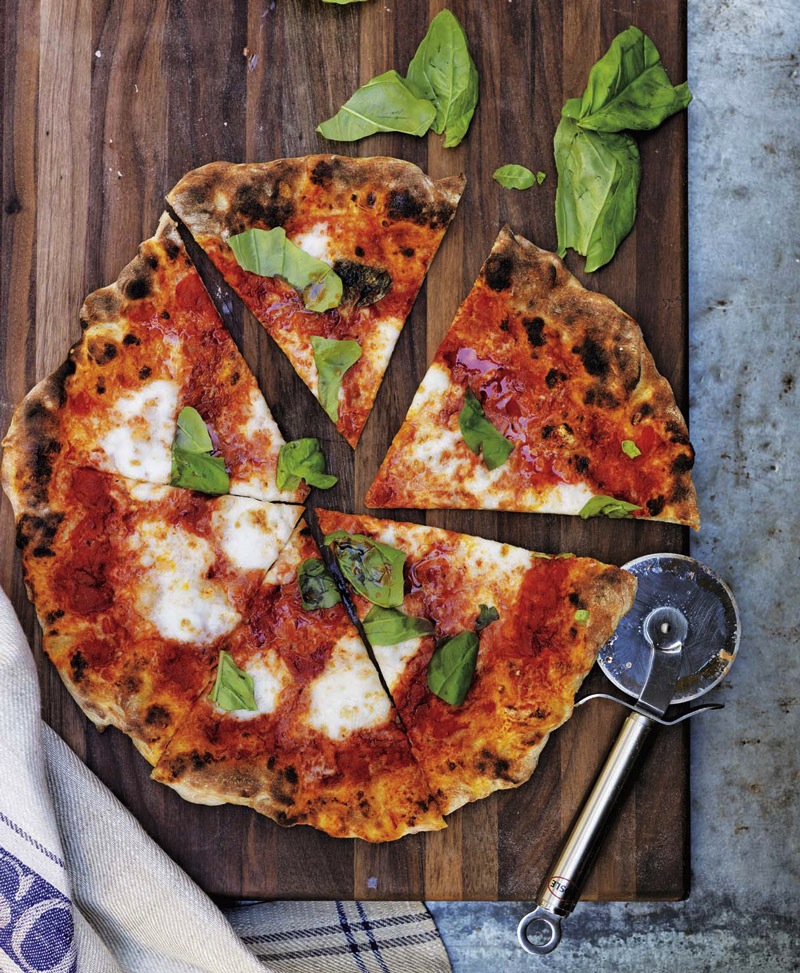
Sigh. What is it about pizza? Few other foods check all the boxes of 1) comfort, 2) appealing to kids, and 3) readily accessible in homemade or takeout incarnations. And once you start craving one, goodness help you if for some odd reason you can’t get your hands on pizza, because nothing else will do.
Whether you’re already making your own expert home pies or you want to level up your game, it’s worth remembering that a truly great pizza has many movable parts—all of which contribute to the whole. Here’s everything you need to create your Platonic (pizza) ideal.
The Dough
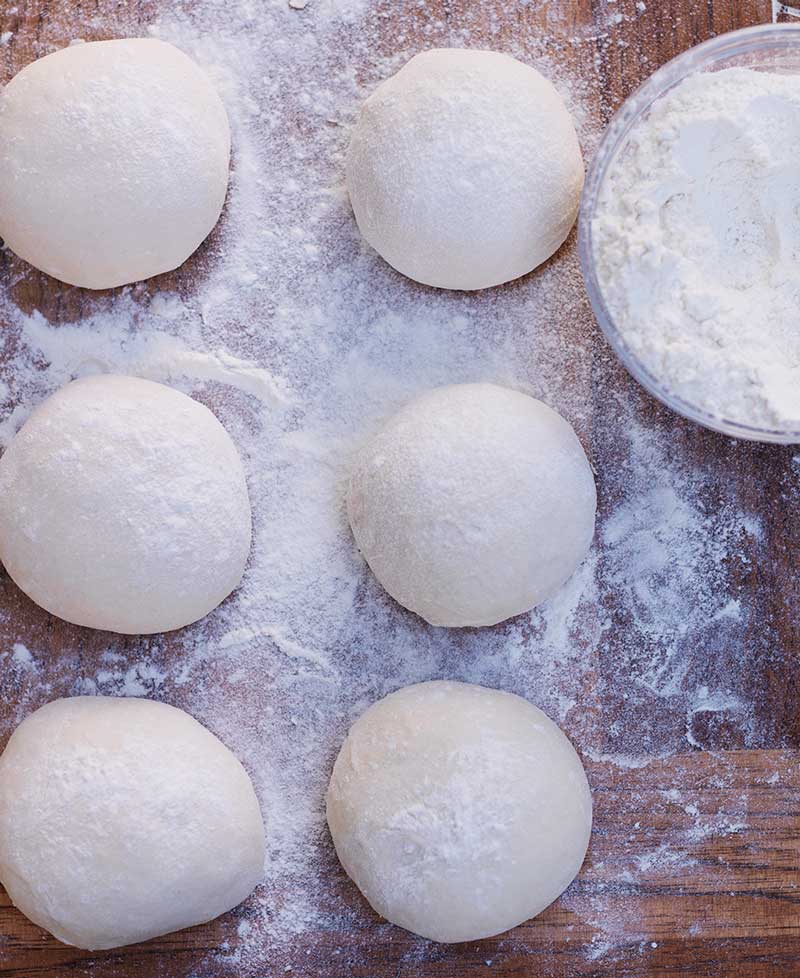
Any pizzaiolo will tell you that the dough is the key to a memorable pie. There must be enough salt, but not too much! You have to let it rise (and sometimes slacken) just the right amount. Perhaps you need a step-by-step guide to a conventional dough, and we’ve got you covered. Maybe the idea of a food-processed dough is more up your alley, and we can’t blame you: It rapidly builds up gluten and can usually save you rising time. Sometimes, as with this gorgeous Che Fico pizza, you’ll want to do an overnight rise in the fridge. And remember that if you’ve gone gluten-free for whatever reason, you needn’t give up pizza! (Think: cauliflower crust!)
The Sauce

“Mamma Mia!” If you’re in the market for a red sauce, don’t overthink it, but do attend to your tomatoes. Though you can get good fire-roasted tomatoes stateside, if you want real grown-in-Italy tomatoes, read the fine print. (Just because the label reads “San Marzano” doesn’t mean they’re not from New Jersey!) Red sauce can be as simple as tomatoes crushed with your hands, plus salt, or you can try sautéing garlic in olive oil with red pepper flakes and oregano. Delicious white sauces, which you should try as a break from your red-sauced routine, can feature ricotta and heavy cream or a thick béchamel with Parmesan. And don’t neglect green sauces (try basil or kale pesto), or just a simple brush of good olive oil.
The Toppings
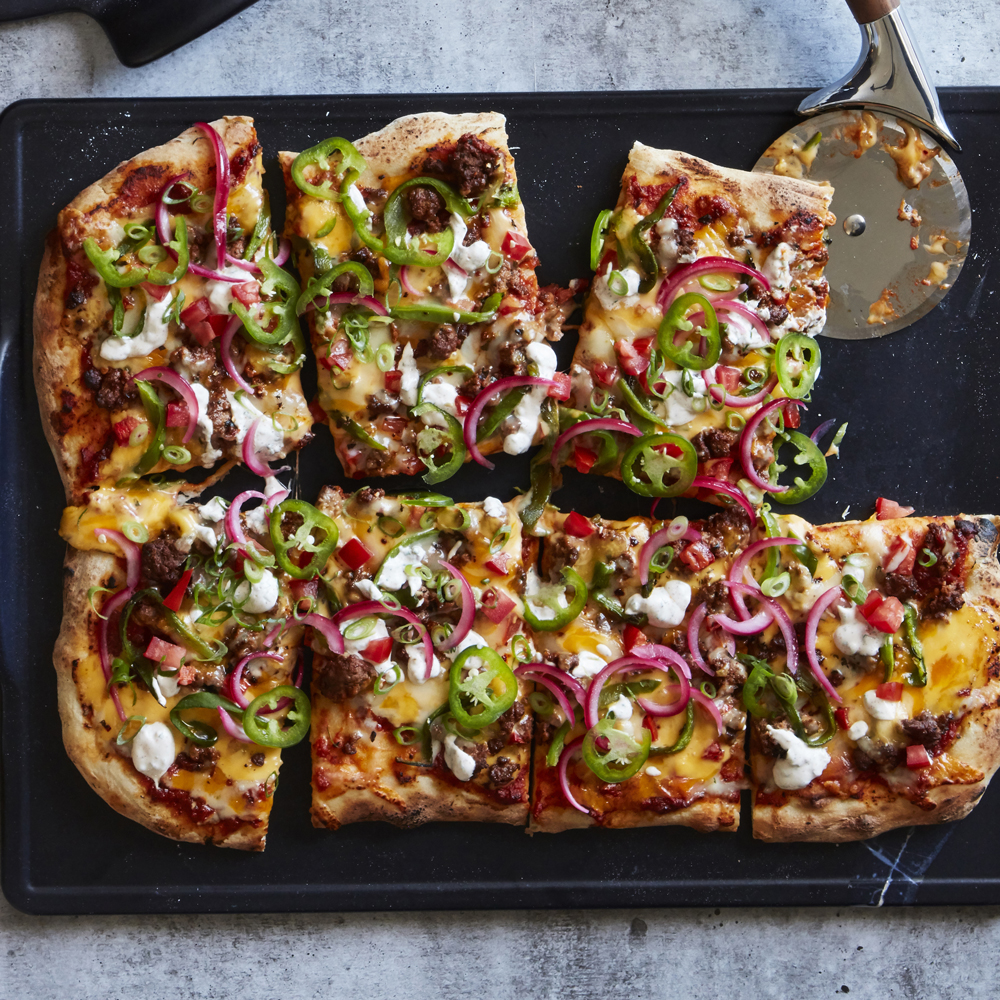
The beautiful part about making multiple rounds of dough and freezing some is that you have a blank canvas for whatever veggies are languishing in the fridge. Got caramelized onions and a hunk of Taleggio? Awesome pizza. How about roasted broccoli and sausage? Rad. Potatoes and blue cheese? Nice. Almost anything can become a pie, and don’t get stuck on solely Italian combos. (Have you met our nacho pizza?!)
The Heat
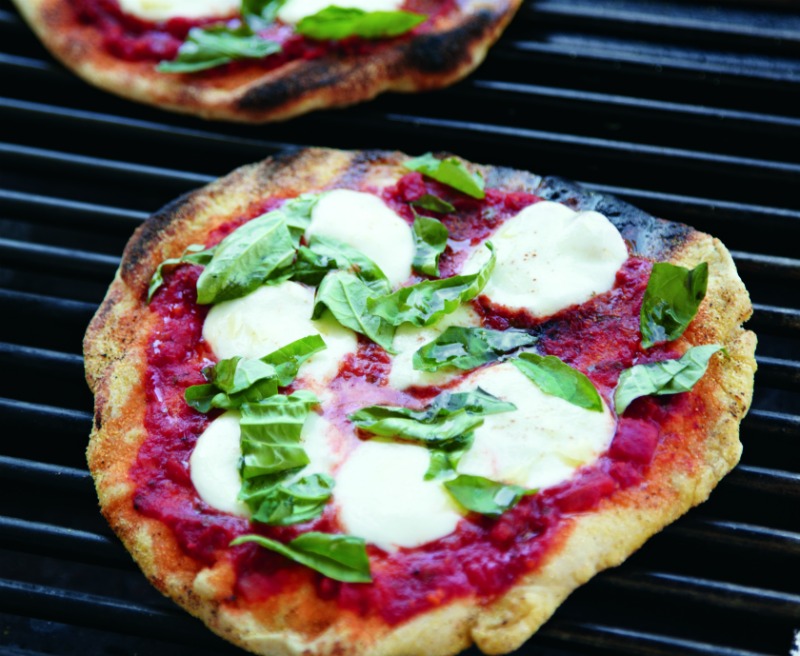
File under, “Yes, you can!” Think: grill. Whether you have a small budget for an indoor pizza-maker (that can get up to 660°!) or you’re ready to spring for an outdoor pizza oven, there’s one waiting for you out there.
Whether or not you want to snag a pie-particular gadget, an outdoor grill can be a great way to cook pizza since it’s easy to get the temperature really high. (To be most effective, place a pizza stone over indirect heat in a very hot grill.) In your conventional oven, read the recipe, but you’re most likely looking at least 450°, if not higher, on the bottom third of the oven.
The Gear
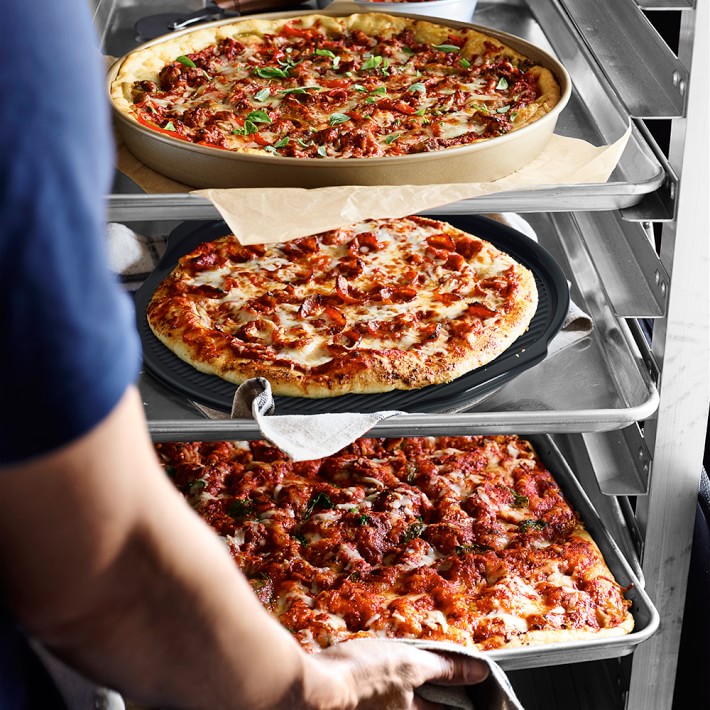
The best pizza stones are multi-use: This one, from Emile Henry, can double as a trivet or even a cheeseboard, and we love that it has handles. (Do pick out the stone best suited to the style of pizza you prefer, of course.) Then there’s the wheel: You do indeed need one unless you enjoy playing cat’s cradle with mozzarella or ending up with it in your hair. Pizza peels are ideal for removing anxiety from the into-and-out-of-the-blazing-hot-oven process. And, ahem, our test kitchen happened to develop a beautiful book dedicated to your pizza success. Twenty-five recipes, many of them vegetarian, right this way.

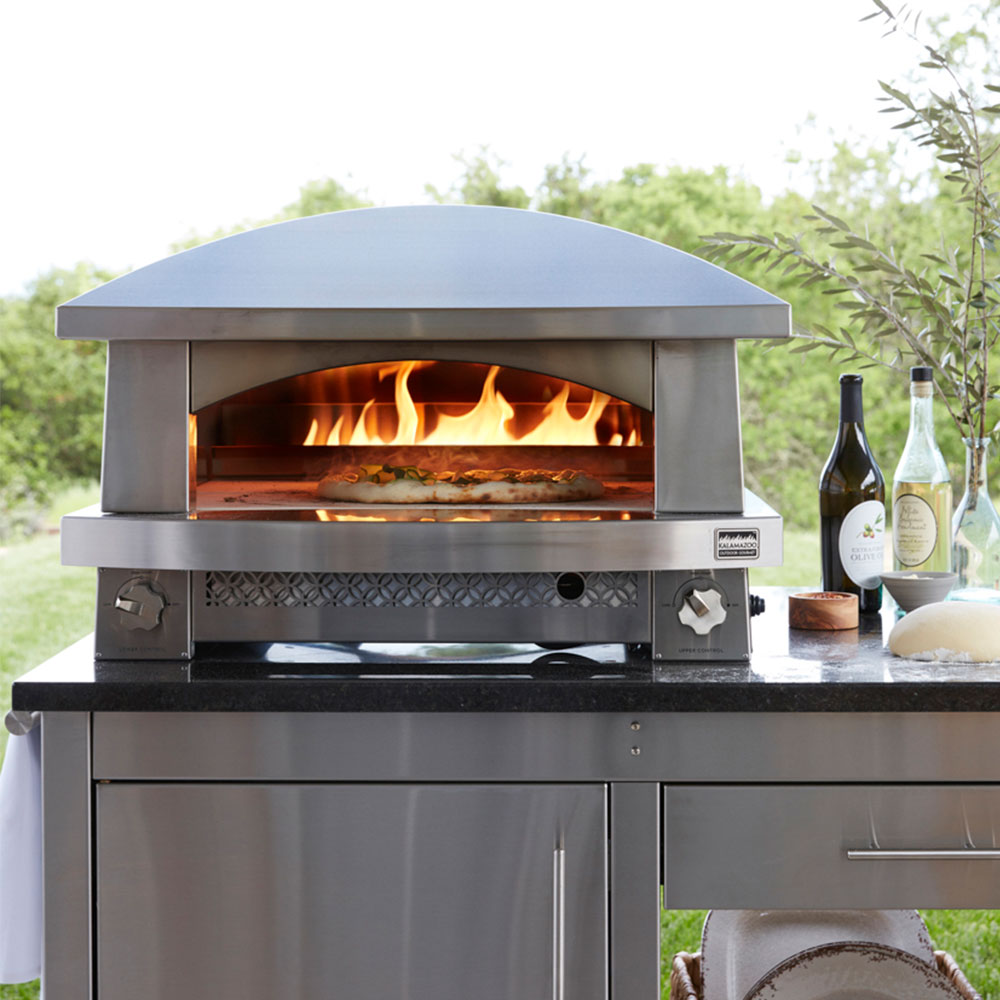
1 comment
[…] say you would like to mast this, where do you start? Williams & Sonoma has a nice list of the various components you will need. In my book, the most important is the pizza oven (or grill).- You need a ton of heat to get the […]